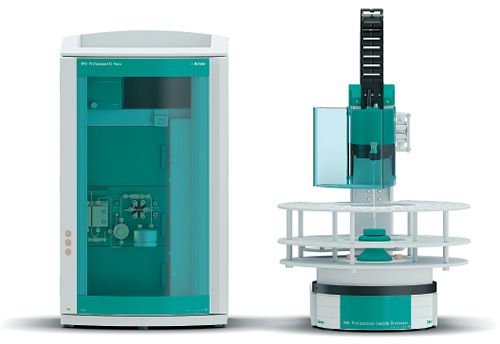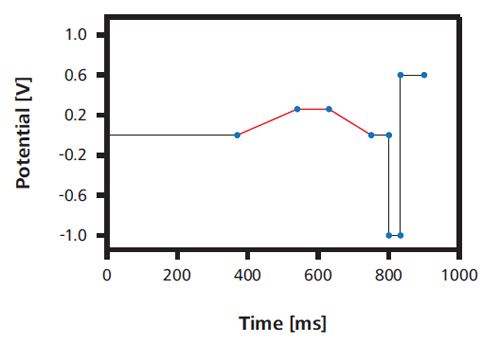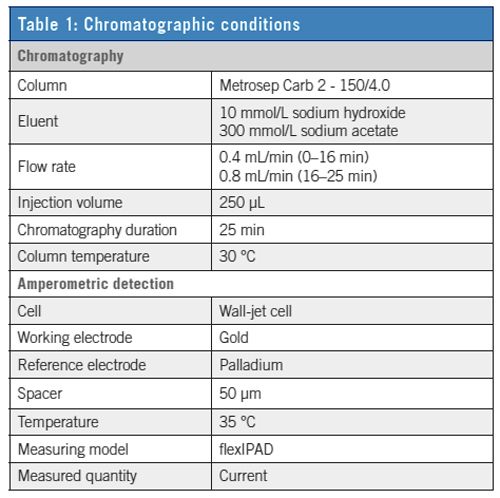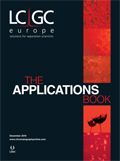Glyphosate and AMPA in Drinking Water: Determination Using Ion Chromatography with Pulsed Amperometric Detection
The Application Notebook
In March 2015, the International Agency for Research on Cancer (IARC) published a report that stated that glyphosate was “probably carcinogenic to humans”. Ever since, the use of this chemical has been highly controversial. In some countries, including the USA and Australia, there are already limit values in effect for the weed killer.
Markus Läubli, Bastian Brand, Andrea Aeschlimann, Gabriele Zierfels, and Stephanie Kappes, Metrohm
In March 2015, the International Agency for Research on Cancer (IARC) published a report that stated that glyphosate was “probably carcinogenic to humans”. Ever since, the use of this chemical has been highly controversial. In some countries, including the USA and Australia, there are already limit values in effect for the weed killer.
Carcinogenic or Not?
The broad spectrum herbicide glyphosate is used all over the world in agriculture, in domestic gardens, and in public and private spaces kept free from “vegetal invasion”, such as railway tracks. Since the International Agency for Research on Cancer (IARC) - the specialized cancer research agency of the World Health Organization (WHO) - found that glyphosate was “probably carcinogenic to humans” in a report published in March 2015, the chemical repeatedly made headlines (1). Experts were then divided over whether glyphosate should be reapproved after the expiry of its EU market approval on 30 June 2016. This is because the European Food Safety Authority (EFSA) only recently arrived at the opposing conclusion that it is unlikely that glyphosate is genotoxic or poses a carcinogenic threat (2). The approval of glyphosate was initially extended by 18 months, but at the end of 2017, the question of whether glyphosate should remain in use in the EU will resurface.
Limit Values for Glyphosate in Drinking Water
Because chemicals used in farming can seep through the ground and into the ground water, limit values are in effect in some countries concerning the concentration of glyphosate in drinking water. For example, the US Environmental Protection Agency (EPA) forbids any concentrations that exceed the limit of 700 µg/L. In Canada, the maximum permissible concentration is 280 µg/L. Australia stipulates a much lower limit value at 10 µg/L.
The following will set out the initial results of the determination of glyphosate and AMPA in drinking water in the low µg/L range using IC with pulsed amperometric detection (PAD). The detection limits for glyphosate and AMPA previously attained with pulsed amperometric detection were around ≥ 50 µg/L (3). Given this improvement in terms of sensitivity, the method outlined here represents a promising approach to the screening of water and food samples for glyphosate and AMPA.
Instrumentation
All determinations were performed with an IC system consisting of a 940 Professional IC Vario ONE with an IC Amperometric Detector and an 858 Professional Sample Processor for automatic sample injection (Figure 1). The measuring mode flexIPAD (FLEXible Integrated Pulsed Amperometric Detection) was used on a gold working electrode in the amperometric detector. The flexIPAD mode is characterized by its special, multi-stage potential profile. The profile of the potential curve produced in one measuring cycle in flexIPAD mode is presented in Figure 2.
Figure 1: Glyphosate and AMPA were determined with the ProfIC IC Vario ONE Amperometry IC system.

Figure 2: Pulse profile of the flexIPAD method. A measuring cycle lasts 0.9 s; measurement of the current is performed during the phase shown in red.

Glyphosate and AMPA were separated on the high-capacity anion separation column Metrosep Carb 2 - 150/4.0. The causticâsoda–acetate eluent used contains 10 mmol/L sodium hydroxide and 300 mmol/L sodium acetate. Under these conditions, AMPA and glyphosate elute after 6.4 and 21.1 min, respectively.
Experiment
The goal of this experiment is to investigate the separation of glyphosate and AMPA in the Metrosep Carb 2 separation column, as well as to clarify the detection using pulsed amperometry and its sensitivity.
In order to accelerate the elution of glyphosate, a flow gradient is used: after AMPA elution at 6.4 min, the flow rate is doubled from 0.4 mL/min to 0.8 mL/min. This results in a retention time of 21 min for glyphosate. The chromatographic conditions are summarized in Table 1.
Results

Figure 3 shows the chromatogram of the determination of AMPA and glyphosate under the conditions listed in Table 1. An aqueous standard solution containing 10 µg/L each of both components was injected. To investigate the suitability of the process for drinking water, tap water from Herisau (Switzerland) was analyzed and spiked with different amounts of AMPA and glyphosate. The concentrations and peak areas found are shown in Table 2.
Figure 3: Separation of AMPA and glyphosate. A standard solution containing 10 micrograms/L of each component in ultrapure water was analyzed. For conditions see Table 1.

The detection limits for both components were determined using the signal-to-noise (S/N) ratio, that is, the ratio of the peak height to the baseline noise. At the detection limit, the S/N ratio is 3; with smaller values, secured detection is not possible. The detection limit found for AMPA was considerably lower than 1 µg/L, while the limit for glyphosate was approximately 1 µg/L. Figure 4 shows the chromatogram of the drinking water spiked with 2 µg/L glyphosate and AMPA.
Figure 4: Determination of AMPA and glyphosate in drinking water spiked with 2 micrograms/L of each component. For conditions and results, see Tables 1 and 2.

Summary
For the first time, glyphosate and its primary metabolite AMPA were determined in drinking water in the low µg/L range using ion chromatography with pulsed amperometric detection (flexIPAD). This puts at our disposal a reliable and - compared with HPLC with a mass-selective detector - very inexpensive method for determining the glyphosate and AMPA content in water and foodstuffs. With a detection limit of approximately 1 µg/L, the adherence to limit values for glyphosate can be verified in the USA, Canada, and Australia, among others.
References
- IARC Monographs Volume 112 (2015). Retrieved from http://monographs.iarc.fr/ENG/Monographs/vol112/mono112-09.pdf on 27 June 2016.
- EFSA press news, 151112 (2015). Retrieved from http://www.efsa.europa.eu/en/topics/factsheets/glyphosate151112 on 27 June 2016
- F. Sanchez-Bayo, R.V. Hyne, and K.L. Desseille, Anal. Chim. Acta675, 125–131 (2010).

Metrohm International Headquarters
Ionenstrasse, 9101 Herisau, Switzerland
Tel: +41 71 353 85 04
Website:www.metrohm.com
Sorbonne Researchers Develop Miniaturized GC Detector for VOC Analysis
April 16th 2025A team of scientists from the Paris university developed and optimized MAVERIC, a miniaturized and autonomous gas chromatography (GC) system coupled to a nano-gravimetric detector (NGD) based on a NEMS (nano-electromechanical-system) resonator.

.png&w=3840&q=75)

.png&w=3840&q=75)



.png&w=3840&q=75)



.png&w=3840&q=75)







